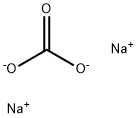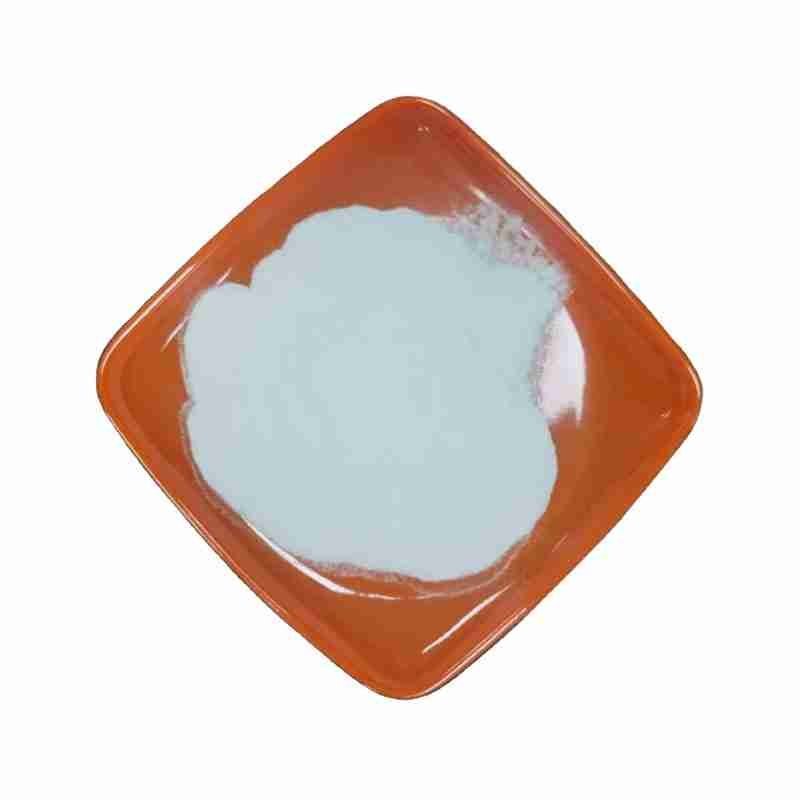Sodium carbonate CAS #497-19-8
Sodium carbonate (497-19-8), Na2CO3, is the sodium salt of carbonic acid. The pure product is a white, odorless powder with strong alkalinity. It is highly hygroscopic. It is easily soluble in water to form a moderately alkaline aqueous solution.
Sodium carbonate is widely used in various fields around the world. One of the most important applications of sodium carbonate is in the manufacture of glass. According to statistical information, about half of the total production of sodium carbonate is used to make glass. In the glass production process, sodium carbonate acts as a flux in the melting process of silicon dioxide.
发送询盘
Sodium carbonate CAS #497-19-8
| Sodium carbonate Basic information |
| Description?Physical Properties?Chemical Properties?Uses?Biological Functions?Toxicity?Production method?References |
| Product Name: | Sodium carbonate |
| Synonyms: | Sodium carbonate-12C, 13C-depleted;ODA ASH;SODA ASH LIGHT & SODA BI CARBONATE;SODA ASH (LIGHT AND DENSE );sodium carbonate, acs primary standard;sodium carbonate, anhydrous, puratronic;SODIUMCARBONATE,ANHYDROUS,BIOTECHGRADE;SODIUMCARBONATE,ANHYDROUS,GRANULAR,REAGENTSPECIAL,ACS |
| CAS: | 497-19-8 |
| MF: | CH2O3.2Na |
| MW: | 105.99 |
| EINECS: | 207-838-8 |
| Product Categories: | Chemical Synthesis;S – ZTitration;Salt Solutions;Solution containers (VOLPAC);Synthetic Reagents;Chemical Synthesis;Inorganic Bases;Materials Science;Metal and Ceramic Science;Salts;Sodium Salts;Synthetic Reagents;metal carbonate;Alphabetical Listings;Q-S;Stable Isotopes;Inorganic BasesVolumetric Solutions;Chromatography/CE Reagents;Eluent concentrates for ICAlphabetic;Ion Chromatography;S;SN – SZ;By Reference Material;Concentrates (e.g. FIXANAL);Reference Material Hydrochloric acidTitration;Salt Concentrates;Inorganics;497-19-8 |
| Mol File: | 497-19-8.mol |
 |
|
| Sodium carbonate Chemical Properties |
| Melting point | 851 ??C (lit.) |
| Boiling point | 1600??C |
| density | 2.53 |
| refractive index | 1.535 |
| storage temp. | 15-25??C |
| solubility | H2O: 1?M at?20???C, clear, colorless |
| form | Solid |
| Specific Gravity | 2.532 |
| color | White |
| PH | 10.52(1 mM solution);10.97(10 mM solution);11.26(100 mM solution); |
| Odor | at 100.00?%. odorless |
| pka | (1) 6.37, (2) 10.25 (carbonic (at 25??) |
| Water Solubility | 22 g/100 mL (20 oC) |
| Sensitive | Hygroscopic |
| ??max | ??: 260 nm Amax: 0.01 ??: 280 nm Amax: 0.01 |
| Merck | 14,8596 |
| BRN | 4154566 |
| Dielectric constant | 5.3??Ambient?? |
| Stability: | Stable. Incompatible with powdered alkaline earth metals, aluminium, organic nitro compounds, fluorine, alkali metals, nonmetallic oxides, concentrated sulfuric acid, oxides of phosphorus. |
| InChIKey | CDBYLPFSWZWCQE-UHFFFAOYSA-L |
| CAS DataBase Reference | 497-19-8(CAS DataBase Reference) |
| NIST Chemistry Reference | Sodium carbonate(497-19-8) |
| EPA Substance Registry System | Sodium carbonate (497-19-8) |
- 2
- 2-diallylpent-4-en-1-amine
- 4
- 95-16-9
- Ammonium sulfamate
- Benzothiazole
- cas:67889-00-3ح2
- cas:83524-75-8 | pigment black 32
- cas:928836-00-4 | 2
- cas:932745-70-5 | 4
- Chemical Minerals
- Coconut diethanolamide
- Daily Chemicals
- discount
- for sale
- General pvc resin
- hexyl D-glucoside
- in stock
- Lauramidopropyl betaine
- LAURIC ACID MONOETHANOLAMIDE
- Petroleum Additives
- Plasticiser
- Ploymers
- price
- PVC
- quotation
- Raw Materal
- Remove term: Petroleum Additives Petroleum Additive
- SODIUM ETHYL 2-SULFOLAURATE
Related Products
Chemical Name: Arabic gum
CAS No.: 9000-01-5
Appearance: powder
Chemical Name: UV-120
Other Name: (2’,4’-Di-tert-butylphenyl 3,5-di-tert-butyl-4-hydroxybenzoate)
CAS No.: 4221-80-1
Molecular Fomula: C29H42O3
Molecular weight: 438.66
Assay: ≥99%(LC)
Ammonium sulfamate is a white crystalline compound with the chemical formula (NH4)2SO3. It is a versatile chemical used in various applications, including as a flame retardant, a fertilizer ingredient, and a chemical intermediate. In the agricultural sector, it serves as a source of nitrogen, promoting plant growth. As a flame retardant, it is effective in reducing the flammability of materials. Additionally, it is used in the synthesis of other chemicals due to its reactivity with amines and other organic compounds. Its properties make it a valuable component in a range of industrial processes.
Water glass is an aqueous solution of silicate, which is as crystal clear as glass but as fluid as water. It is a soluble alkali metal silicate material composed of a combination of alkali metal oxides and silica.
Water glass plays an important role in industry, agriculture, technology and other fields. As a binder, water glass has occupied a place in the industrial field since its inception. It can be used to block the sewage leaked from the Fukushima nuclear power plant, or to repair cracks in brick walls; it also has anti-corrosion and acid resistance properties. , is an important material for acid-resistant floors and acid-resistant pools in industrial buildings; painting concrete pavements with water glass can also increase the frost resistance and water resistance of the pavement.
Chemical Name: Ammonium Iron(II) Sulfate
Synonyms: Diammonium iron bis(sulphate); iron (ii) ammonium sulfate
CAS No.: 10045-89-3
Molecular Formula: FeH5NO4S
Molecular Weight: 170.95
Chemical Name: Imazalil Sulfate
CAS No.: 58594-72-2
Molecular Formula: C14H14Cl2N2O.H2SO4
Molecular Weight: 395.26
Appearance: Solid
Chemical Name: 1,1,2,2-Tetrachloroethane
Other Name: Tetrachlorethane
CAS No.: 79-34-5
Molecular Formula: C2H2Cl4
Molecular Weight: 167.85
Appearance: Liquid
Sodium aluminosilicate (CAS No.73987-94-7) is an inorganic compound.
It has a certain application in industry. For example, in the ceramic industry, sodium aluminosilicate can be used as a flux and an ingredient in ceramic glazes, helping to improve the performance and appearance of ceramics.
In some chemical processes, it may also function as a precipitating agent or an additive.
In the field of materials science, the properties and structural characteristics of sodium aluminosilicate make it have potential application value in the research and development of some new materials.
Kaolin, also known as china clay, is a naturally occurring hydrated aluminum silicate mineral. It is a soft, white, plastic clay that is widely used in ceramics, papermaking, and as a pigment in paints, coatings, and plastics. Kaolin is valued for its fine particle size, purity, and ability to improve the brightness and opacity of materials. Its inert nature and high refractive index make it ideal for various industrial applications, including cosmetics and pharmaceuticals.
Aluminum chlorohydrate is an inorganic compound often used as a coagulant in water treatment processes. It is also known for its astringent properties and is utilized in various personal care products, such as antiperspirants and deodorants, due to its ability to temporarily close sweat glands. It enhances the viscosity and stability of formulations, making it a valuable ingredient in cosmetics and pharmaceuticals.
Carbon black, also known as carbon dark, is a kind of unformed carbon. It??s a light, loose and extremely fine black greasepaint with a veritably large face area ranging from 10 to 3000m2/g. It??s an deficient combustion of carbonaceous substances( coal, natural gas, heavy oil painting, energy oil painting,etc.) under conditions of inadequate air. Or products deduced from thermal corruption. Those made from natural gas are called?? gas dark??, those made from oil painting are called?? beacon black??, and those made from acetylene are called?? acetylene black??. In addition, there are?? trough black?? and?? furnace black??.
Silicon dioxide, commonly known as silica, is a naturally occurring compound found in quartz and sand. It is a primary component of most rocks and is widely used in various industries due to its high thermal stability, chemical inertness, and optical clarity. In chemical applications, it is valued for its abrasive, refractory, and adsorptive properties, making it essential in products like glass, ceramics, and electronics.

















